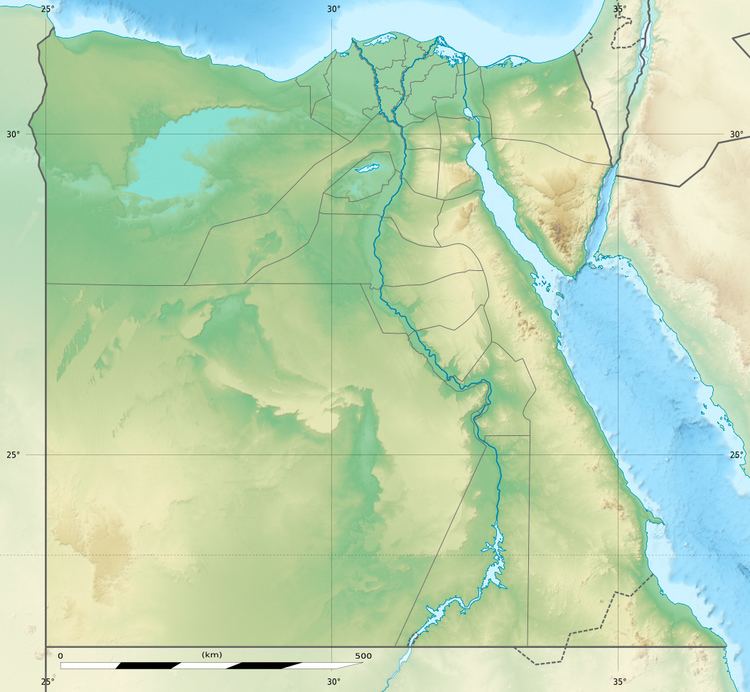Constructed Third Dynasty ? Base 18.39 m | Type Step pyramid Height 4.50 m (current) | |
 | ||
The Pyramid of Naqada, also called the Pyramid of Ombos, is part of a group of seven very similar small step pyramids, which were all erected far from the major centres of Egypt and about which very little is known. It is located about 300 metres north of the ruins of the ancient site of Ombos, near the modern city of Naqada in Upper Egypt. The first (and so far only) excavation was undertaken in 1895 by Flinders Petrie and James Edward Quibell.
Contents
Description
The pyramid measures 18.39 metres on each side and currently is about 4.5 metres tall. It is not oriented to true north, but 12° to the northeast - in parallel with the course of the Nile. The pyramid consists of a core which measures about 5.75 metres on each side, around which three layers of roughly hewen stone were placed. The structure may have originally consisted of three steps. Locally sourced limestone was used as the building material. Under the southwest corner, Petrie discovered a grave measuring 1.25 by 2.00 metres, which very likely does not belong to the pyramid. It is much more likely that it is a secondary burial.
Construction and purpose
The builder and purpose of the pyramid are unknown. Günter Dreyer and Werner Kaiser considered it and the other six pyramids of this group to be a cohesive building project of Pharaoh Huni, the last ruler of the Third Dynasty. Andrzej Ćwiek sees things similarly, but prefers Huni's successor, Snofru (c.2670-2620 BC), the first ruler of the Fourth Dynasty, as the builder. Theories about the purpose of this and the other pyramids range from a site of royal representation, to a depiction of the benben stone, a symbol of the political and religious unity of the land, or a monument for a royal wife.
